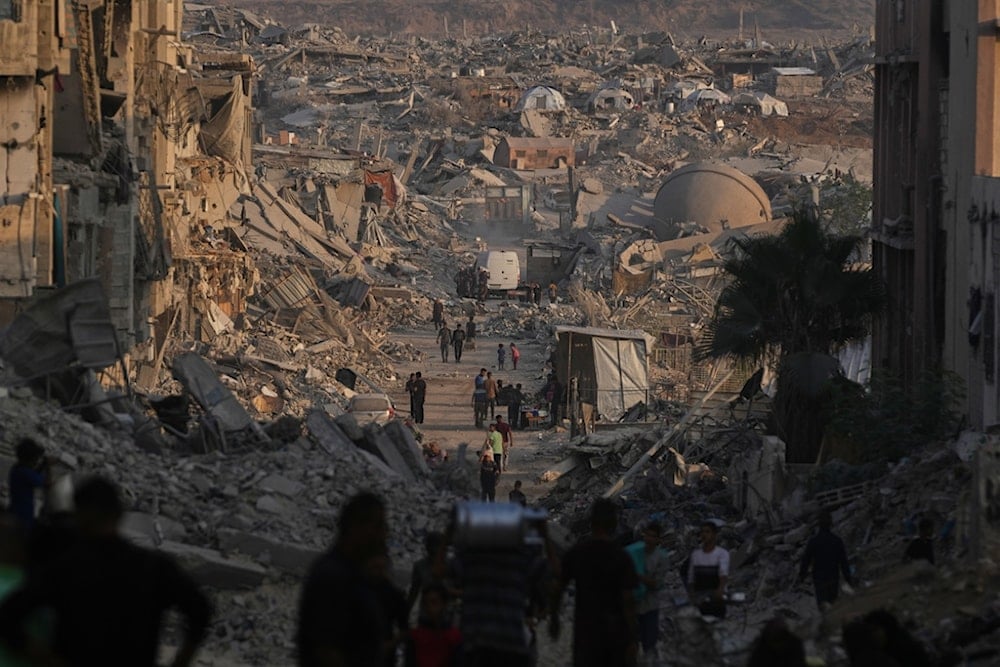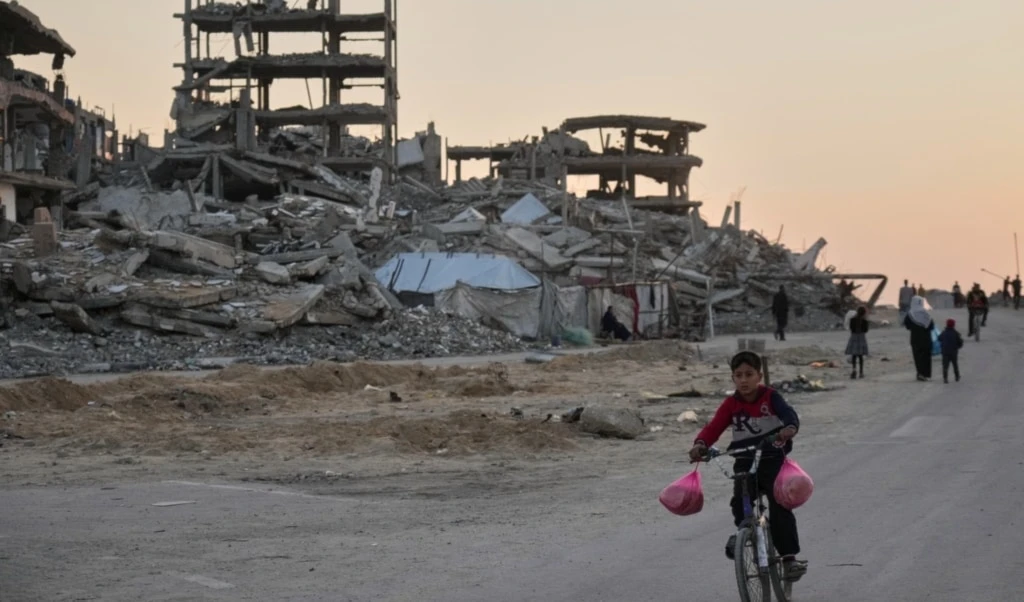Unexploded ordnances in Gaza may take 30 yrs to clear, aid group says
Humanity & Inclusion says clearing unexploded ordnances in Gaza could take up to 30 years, as aid teams face Israeli restrictions and millions of tons of rubble.
-

Palestinians walk through the destruction caused by the Israeli air and ground aggression in Gaza City, Thursday, October 23, 2025. (AP)
Clearing unexploded ordnances in Gaza could take as long as 30 years, according to the humanitarian organization Humanity & Inclusion, which has described the area to Reuters as a "horrific, unmapped minefield."
Nick Orr, an Explosive Ordnance Disposal (EOD) expert with the group, compared the situation in Gaza to post-World War II British cities, noting that full clearance is nearly impossible due to the depth and complexity of the munitions buried beneath the rubble.
"We will find it for generations to come," Orr told Reuters.
The presence of these unexploded Israeli munitions continues to claim lives. According to a UN-led database, more than 53 people have been killed and hundreds more have been injured, though aid groups believe the actual numbers are significantly higher.
Read more: Gaza buried under 70 million tons of debris, 20,000 lingering UXOs
Ceasefire raises hope, but challenges remain
A US-brokered ceasefire this month has raised hopes that humanitarian efforts can begin to remove the ordnances scattered across millions of tons of Gaza rubble.
Orr believes that while full subterranean clearance is unrealistic, a surface-level clearance could be achieved over the next 20 to 30 years. "It’s going to be a very small chipping away at a very big problem," he stated.
Humanity & Inclusion’s seven-person team is set to begin surveying remnants of war in critical infrastructure like hospitals and bakeries.
However, the group has yet to receive comprehensive permission from the Israeli government to commence clearance or import the required equipment.
Read more: Gaza aid trickles in: 'Israel' allowed only 986 trucks since ceasefire
Israeli restrictions stall humanitarian efforts
The Israeli military body overseeing aid to Gaza, COGAT, has not responded to Reuters' requests for comment. It continues to block the entry of items into Gaza deemed to have "dual-use" equipment that could be repurposed for military activity.
Orr noted that his team is specifically requesting permission to import supplies that burn away explosives instead of detonating them, as a means to avoid their potential reuse. "If there is going to be any kind of future inside of Gaza, there needs to be an enabling security force that allows humanitarians to work," he emphasized.
With much of Gaza reduced to rubble, the presence of unexploded ordnances poses a long-term threat to civilians and reconstruction efforts alike. Orr and other experts said that unless access is granted and clearance efforts supported, the hazards will remain embedded in Palestine’s daily life for decades.
As aid workers await clearance to operate, the enclave continues to suffer under the weight of war remnants, blocked humanitarian aid, and the slow pace of reconstruction, all of which make clearing Gaza not just a logistical challenge, but a deeply political one as well.

 3 Min Read
3 Min Read










